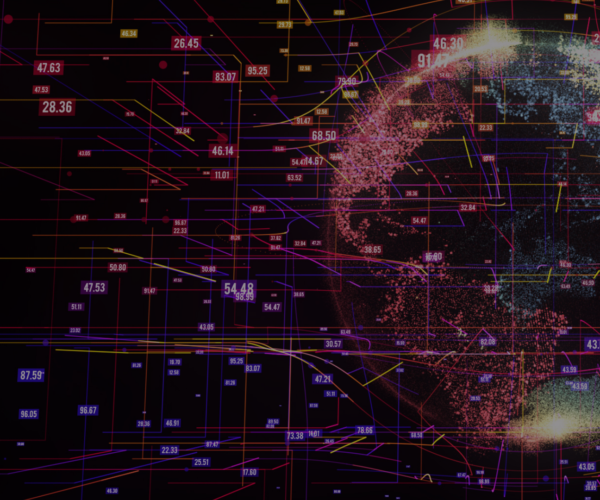Breakthrough technologies in Horizon Europe: EIC Pathfinder - early stage support
In this post, we explain how to apply for funding under the EIC Pathfinder instrument - dedicated to supporting innovation of a groundbreaking socio-economic nature carried out by consortia of entrepreneurs or consortia of both science and industry partners.
EIC Pathfinder is an instrument of support for projects at the initial stage of development - from the idea to the creation of Proof of Concept (PoC), i.e., from level I to IV of technological readiness (TRL). In 2021, the total budget of EIC Pathfinder is €168 million, of which €132 million has been allocated to theme-based calls and €36 million to the open call.
Key information about the instrument - how much, when and for whom?
The instrument is primarily aimed at scientific and industrial consortia from at least 3 different countries covered by Horizon Europe. The calls are open to all types of companies - large companies, mid-caps as well as SMEs. Although international cooperation is an important factor, some thematic calls allow participation of smaller consortia. Co-financing in the form of grants is awarded to projects worth up to EUR 4 million. Importantly, due to the high-risk nature of projects in the early stages of development, the funding level is up to 100% of eligible costs.
Although the applications window for the open call for proposals in 2021 has already closed, the thematic calls for proposals are open until 27 October 27 2021. Below we provide information about the currently available thematic calls.
Thematic calls - Funding the EU's major technological challenges
In 2021, The European Commission has identified 5 themes (referred to as Challenges) that reflect the most significant technologies likely to have a disruptive impact across the EU.
Awareness inside (Self-aware artificial intelligence)
The thematic scope is aimed primarily at the IT sector developing AI technologies. The development of technologies addressing this challenge would advance the engineering of complex systems, making them more resilient, self-developing and human-centred. Within the identified challenge, projects are expected to , among other things:
- demonstrate the role and added value of consciousness in technology;
- identify an integrated approach to consciousness engineering, its technological toolbox, needs and implications, and its limitations, including ethical and regulatory requirements.
Tools to measure & stimulate activity in brain tissue
The scope primarily targets the MedTech sector, including entities seeking to develop new medical devices for measuring and stimulating brain activity. Addressing this challenge would allow development of new therapeutic tools that could revolutionize the treatment of brain diseases, including memory disorders (Alzheimer's disease), epilepsy, movement disorders (Parkinson's disease) and many others. Under the identified challenge, projects are expected to:
- develop devices with unique features, e.g., targeting a currently untreated disorder, offering unparalleled miniaturization, low latency, closed-loop monitoring-stimulation feedback, etc.;
- new or emerging physical principles or methodologies that could form the basis for future detection or brain stimulation technologies with clear and measurable benefits.
Emerging Technologies in Cell & Gene Therapy
The thematic scope is aimed primarily at the biomedical technology sector working on gene therapies (CGT). Addressing this challenge will enable development of gene therapies that increasingly shape medical treatment and diagnosis and bring us closer to the era of precision medicine. Under the identified challenge, projects are expected to advance / promote:
- development of cell therapy manufacturing technologies and products to the clinical stage;
- development of adoptive cell therapies (CAR-T, TCR, TIL);
- identification of next generation cell therapies for cancer treatment;
- application of personalized cell therapy in the treatment of cancer patients;
- improvement of gene (vector) delivery systems efficiency.
Novel routes to green hydrogen production
The thematic scope is aimed primarily at the energy sector, developing hydrogen technologies. Addressing the challenge should contribute to the development of new technologies enabling decarbonisation of the European energy sector and achievement of the ambitious goal of climate neutrality by 2050. The challenge expects projects that seek to develop innovative technologies for the production of green hydrogen through biological, chemical or physical means - without the use of fossil fuels, potentially using salt or wastewater, atmospheric moisture, biomass or recycled by-products, or the co-production of carbon-lowering chemicals.
Engineered Living Materials (ELM)
A challenge is targeted at the bioengineering and materials engineering sectors. Projects should contribute to the development of new materials with lower costs and less environmental impact. Within this challenge, projects are expected to develop technologies for the production of at least two different natural materials (i.e., with different applications, scale -10 x difference and cellular composition). Projects should include the development and Proof of Concept of technologies to produce a minimum of two new biological materials larger than 1 cm or a laboratory-validated, automated, computer-aided design-build-test-learn (DBTL) platform.
Future prospects
The challenges presented are for 2021 only. Details of further calls and challenges under the EIC Pathfinder instrument will be published in the next EIC Work Programme for 2022, which should be released at the end of 2021.
Read more:
Listen



